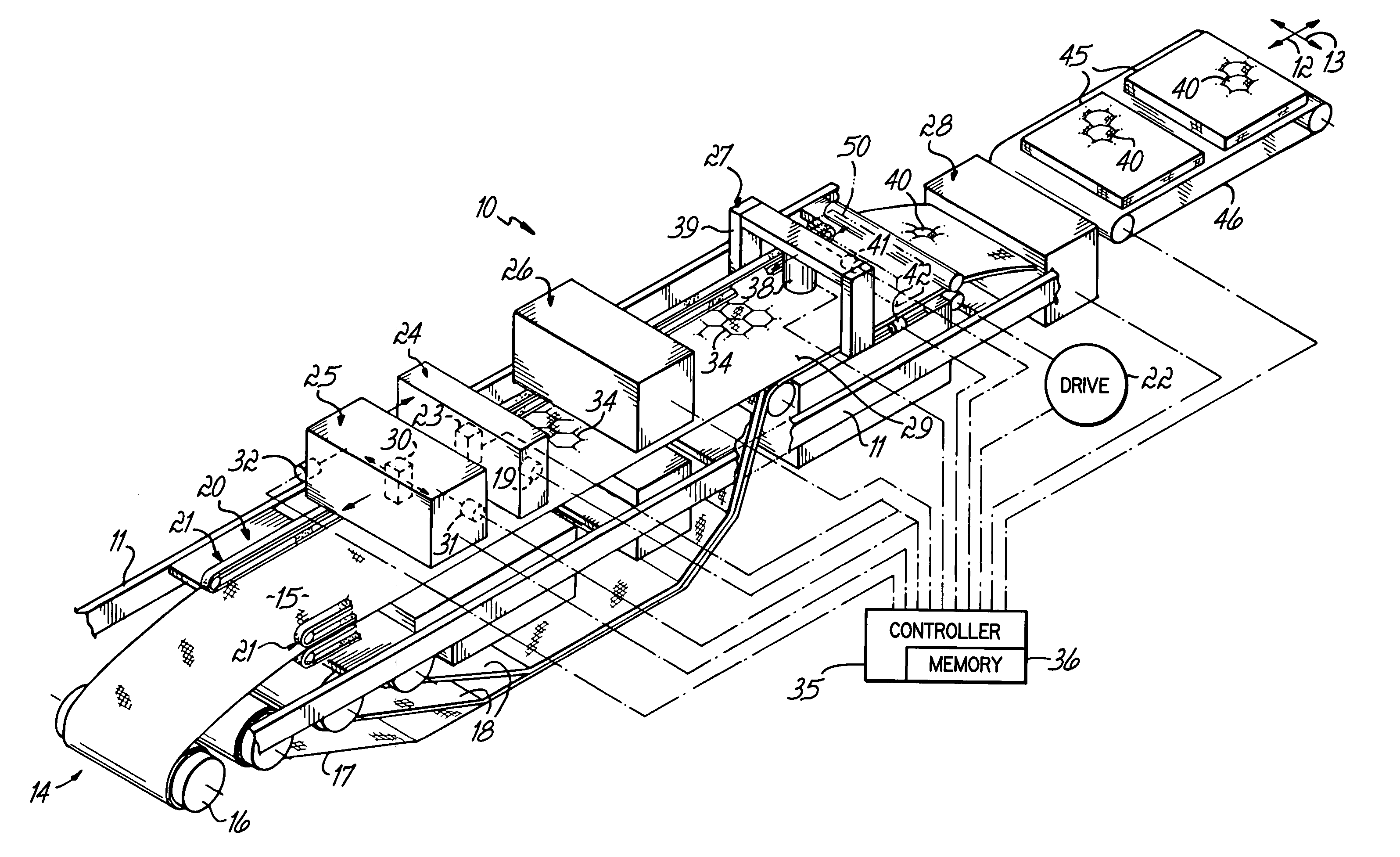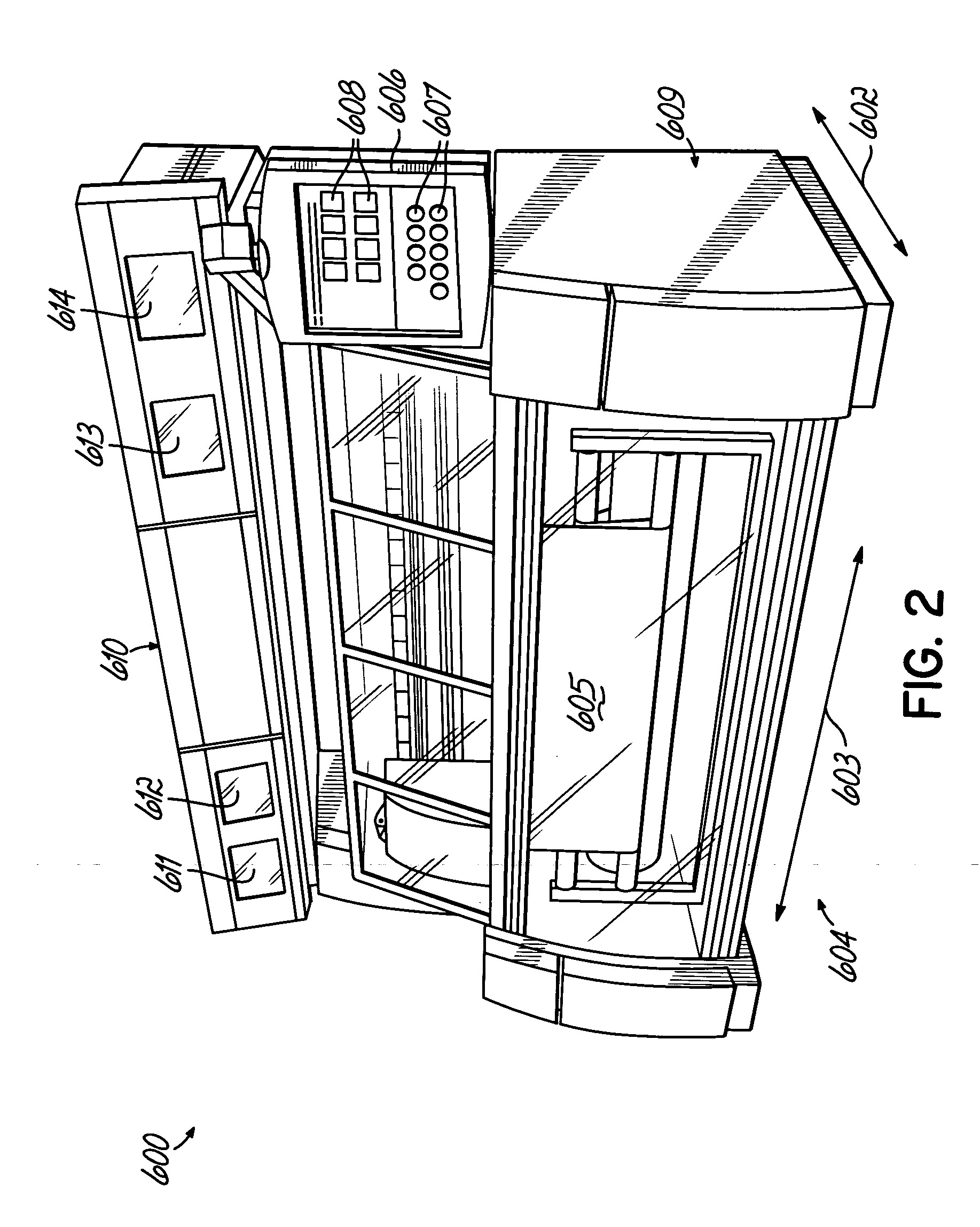Method and apparatus for ink jet printing
a technology of ink jet printing and ink jet printing, which is applied in the direction of dyeing process, printing mechanism, transportation and packaging, etc., can solve the problems of inability to meet the needs of large banners, flags and signs in quantities that are not economical for many conventional printing processes, slow process, and lack of reliability, etc., to achieve low potential sensitivity or toxicity, high color saturation potential, and effective curing of ink
- Summary
- Abstract
- Description
- Claims
- Application Information
AI Technical Summary
Benefits of technology
Problems solved by technology
Method used
Image
Examples
Embodiment Construction
[0060]FIG. 1 illustrates a quilting machine 10 having a stationary frame 11 with a longitudinal extent represented by an arrow 12 and a transverse extent represented by an arrow 13. The machine 10 has a front end 14 into which is advanced a web 15 of ticking or facing material from a supply roll 16 rotatably mounted to the frame 11. A roll of backing material 17 and one or more rolls of filler material 18 are also supplied in web form on rolls also rotatably mounted to the frame 11. The webs are directed around a plurality of rollers (not shown) onto a conveyor or conveyor system 20, each at various points along the conveyor 20. The conveyor system 20 preferably includes a pair of opposed pin tentering belt sets 21 which extend through the machine 10 and onto which the outer layer 15 is fed at the front end 14 of the machine 10. The belt sets 21 retain the web 15 in a precisely known longitudinal position thereon as the belt sets 21 carry the web 15 through the longitudinal extent o...
PUM
| Property | Measurement | Unit |
|---|---|---|
| porosity | aaaaa | aaaaa |
| temperature | aaaaa | aaaaa |
| temperature | aaaaa | aaaaa |
Abstract
Description
Claims
Application Information
 Login to View More
Login to View More - R&D
- Intellectual Property
- Life Sciences
- Materials
- Tech Scout
- Unparalleled Data Quality
- Higher Quality Content
- 60% Fewer Hallucinations
Browse by: Latest US Patents, China's latest patents, Technical Efficacy Thesaurus, Application Domain, Technology Topic, Popular Technical Reports.
© 2025 PatSnap. All rights reserved.Legal|Privacy policy|Modern Slavery Act Transparency Statement|Sitemap|About US| Contact US: help@patsnap.com



